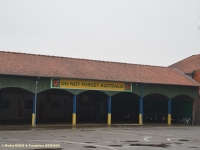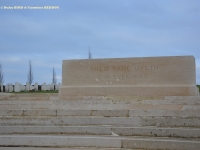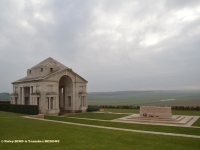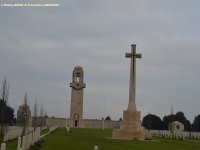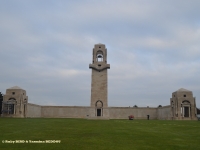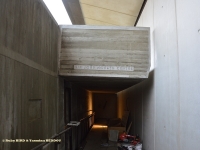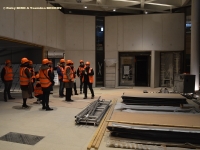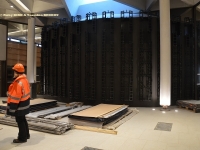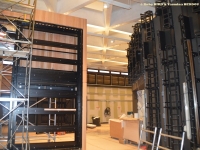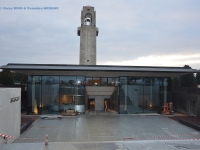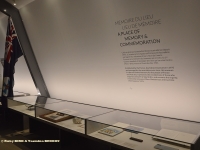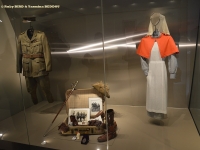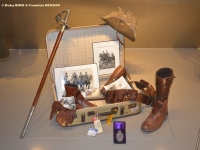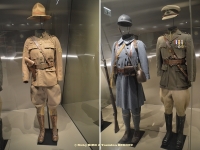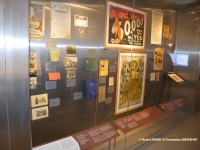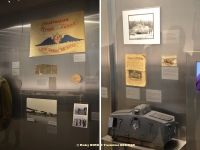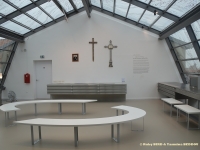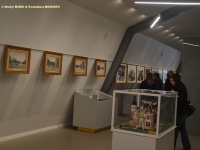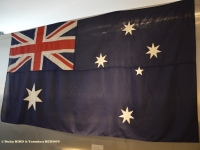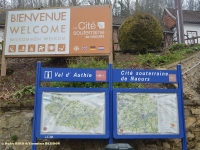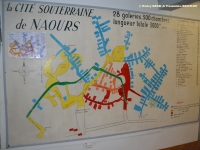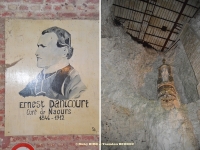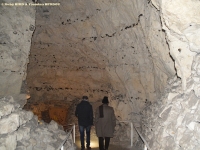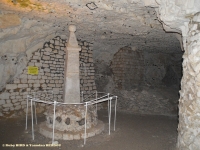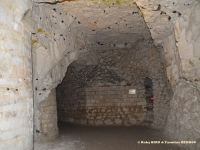Travel
GREAT WAR CENTENARY IN THE SOMME
AUSTRALIANS In THE SOMME
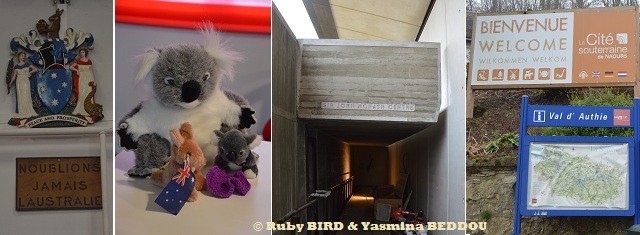
AUSTRALIANS In THE SOMME (Source: © Ruby BIRD & Yasmina BEDDOU)
USPA NEWS -
In 1916, the Department of The Somme became a World Stage where a Score of Nationalities came together to fight or work alongside the Three Warring Empires (France, Germany and Great Britain). Thousands of Soldiers came from the Ends of the Earth to fight in the Somme. Internationalisation did not end with the Cessation of Hostilities in 1918 but continues Today with Souvenirs taken Home by Millions of Men, and War Memories being kept alive with Pilgrimages and Commemorative Monuments...
In 1916, the Department of The Somme became a World Stage where a Score of Nationalities came together to fight or work alongside the Three Warring Empires (France, Germany and Great Britain). Thousands of Soldiers came from the Ends of the Earth to fight in the Somme. Internationalisation did not end with the Cessation of Hostilities in 1918 but continues Today with Souvenirs taken Home by Millions of Men, and War Memories being kept alive with Pilgrimages and Commemorative Monuments.
What differentiates The Somme from the Franco-German Confrontation at Verdun which took place the same Year, is that it was the Symbol of an International War. Three Million Soldiers faced one another along a 45-Kilometre Front.
Remembrance Tourism is an important and Growing Sector in Tourism in The Somme and has been for many years. Somme Tourism and its Partners have always been keen to promote fremembrance Tourism with deep respect for the Spirit of the Sites.
Remembrance Tourism is an important and Growing Sector in Tourism in The Somme and has been for many years. Somme Tourism and its Partners have always been keen to promote fremembrance Tourism with deep respect for the Spirit of the Sites.
The Battlefields of The Somme, Museums, Memorials, Cemeteries, War Relics, attract over 250,000 Visitors every year, of whom 70% come from Abroad, some even coming from the Antipodes, Australia, Newfoundland, South Africa...
The Vast Scale of the Battle of The Somme in 1916 can be seen in the Traces that it has left in the Ground Trenches, Mines Craters, Shattered Vegetation, Villages wiped out. The Remembrance Trail links two of the Symbolic Towns of The Great War, Albert and Péronne.
The Vast Scale of the Battle of The Somme in 1916 can be seen in the Traces that it has left in the Ground Trenches, Mines Craters, Shattered Vegetation, Villages wiped out. The Remembrance Trail links two of the Symbolic Towns of The Great War, Albert and Péronne.
The General Strategy for 1916 on the French, Russian and Italian Fronts had been set out at the Interallied Conference in December 1915 at the Chantilly Headquarters, when Joffre clearly defined the offensive on The Somme. But the "Furnace of Verdun" forced the Allied Commands to shorten the Front Line and reverse roles : the British Army was now to take the Lead....Despite the Allies' repeated efforts and the use of New Weapons such as the First Tanks, the Battle became bogged down and finally faded in the November Mud : the Guns could not be moved, Men and Horses drowned. For a Total Allied Advance of 15 Kilometres, Britain had lost 400,000 Men, Germany 335,000 and France 200,000. This made it the most deadly Battle of the War and explains why the Memory of The Somme remains vivid for the British, the equivalent of the Memory of Verdun for the French.
The SIR JOHN MONASH CENTRE : Commissioned in 2006, the Sir John Monash Centre is designed to educate a New Audience about Australia´s early role in International Affairs, and to share the Stories of Ordinary Australians doing Extraordinary Things on the Battlefields of the Western Front. The Centre is named after General Sir John Monash, who led the Australian Corps with Outstanding Success on the Western Front in 1918. His Success in the Famous Victory at Le Hamel became a Template for Military Operations that followed. The Sir John Monash Centre establishes a Lasting Legacy from Australia´s Centenary of Anzac 2014-2018....The Centre is due to Open in April 2018.
What Will be Expected for the Opening in April 2018 : drawing on the incredible Australian Archive Collection, the Story of Australia´s Involvement on the Western Front Battlefields during the First World War will be told directly from the Personal Diaries, Letters and Service Records of the Men and Women who were there. This amazing Insight into the Events that helped shape a Nation will be delivered through a Highly Intuitive, Interactive System that combines the latest in large scale Interactive Touch Screens and Tables with a specially designed “˜App´. At the Heart of the Centre lwill be lying a 360 degree Theatre that puts the Visitor right into the Battles of Villers-Bretonneux and Hamel, to experience the Western Front as never before.
The FRANCO-AUSTRALIAN MUSEUM (At Villiers-Bretonneux) : entirely renovated in 2016 and located on the First Floor of Victoria School, the Museum is themed not only on the Story of an International Friendship that developped through War and Hardship, but also on Remembrance and Hope for the Future. A large part of its Collection was acquired through Donations made to the Franco-Australian Association. The Museum layout enables Visitors to fully comprehend how this Friendship between the Two Countries was formed through Four Themes : a Place of Memory and Commemoration, Memories of War, a National Memory and Town Memories. Soldiers' Personal Effects (Uniforms, Letters and Photographs) and moving Accounts themed on Franco-Australian Friendship are used to ilustrate these Topics. Mid-Way through the Museum, a Glass-Roofed, Chapel-like Area enable Visitors to see and contemplate the Messge of Thanks displayed in the Schoolyard reading "Do Not Forget Australia".
THE UNDERGROUD CITY OF NAOURS "La Cité Souterraine de Naours" : the Immense Underground Galleries are Former Quarries that were used from the Middle Ages as Shelter during Times of War. The Site´s remarkable Layout has been recognised as one of the largest Network of Tunnels in Northern France. But a City was not the Original Goal for the Site, it began as a Limestone Quarry that was first built by the Romans during the 2nd Century AD. Over the Centuries, the Quarry fell out of use and Locals began to use it for storing Goods and hiding from invading Armies. With the onset of the Conflicts that rattled the late Roman Empire and the early Middle Ages, People began to use the Quarry increasingly as a Place to hide.
They planned Things very well and the Chimneys from the Bakers´ Ovens and any other Fires were routed through Cottages and other existing Structures aboveground so no one would know what was going on below.... The City was eventually abandoned as Europe became more stable and secure. It was rediscovered in 1887 as a Man was renovating his House. After its rediscovery, it became a Major Tourist Attraction. During World War I, it was apparently a Popular Destination for Sight-seeing while off Duty for Soldiers. The City actually has a one of the highest volumes of Historical Graffiti dating to that Era of any WWI Site.
In January 1917, Allan Allsop from Mosman, Sidney, pencilled his Name on one of the Walls of the Underground City. This moving Piece of Graffiti, which even a Century later still looks incredibly fresh, is one of 2000 Pieces to have been currently uncovered. It shows a less violent side to the War, to which we are less accustomed, revealing how Soldiers occupied themselves behind the Lines....
Source : Press Trip to Amiens (December 4-5, 2017) : Sir John Monash Centre, The Franco-Australian Museum, The Underground City of Naours.
Ruby BIRD
http://www.portfolio.uspa24.com/
Yasmina BEDDOU
http://www.yasmina-beddou.uspa24.com/
Source : Press Trip to Amiens (December 4-5, 2017) : Sir John Monash Centre, The Franco-Australian Museum, The Underground City of Naours.
Ruby BIRD
http://www.portfolio.uspa24.com/
Yasmina BEDDOU
http://www.yasmina-beddou.uspa24.com/
Ruby Bird Yasmina Beddou First World War Australians Amiens Villiers Bretonneux Great War Centenary The Somme Commemorate Histor Emotion Sir John Monash Centre Museum Western Front
Liability for this article lies with the author, who also holds the copyright. Editorial content from USPA may be quoted on other websites as long as the quote comprises no more than 5% of the entire text, is marked as such and the source is named (via hyperlink).

